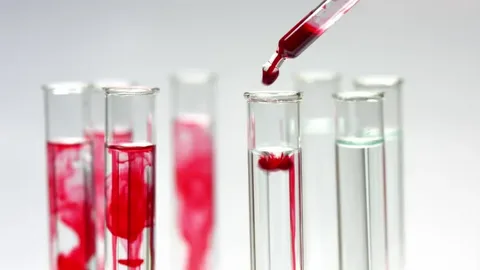Blood analysis is an important procedure for keeping track of your overall health, and it’s something you should consider doing regularly. In Melbourne, there are several options for blood analysis, including live blood analysis and regular laboratory testing. Understanding the differences between these two tests and what to expect during the process can help you make an informed decision about which one is best for you. In this blog post, we’ll take a closer look at Blood Analysis Melbourne, the benefits of each type, and why it’s so important.
What is Live Blood Analysis?
Live Blood Analysis, also known as dark field microscopy, is a non-invasive technique used to examine a single drop of blood under a high-powered microscope. Unlike regular laboratory testing, Live Blood Analysis allows you to observe your blood cells in real time. By looking at the condition, shape, and movement of your blood cells, practitioners can gain insights into your overall health and identify any potential imbalances or abnormalities.
This holistic approach to blood analysis provides a unique opportunity to assess your blood health on a cellular level. It can reveal important information about your immune system, digestion, liver function, and more. Live Blood Analysis offers a comprehensive snapshot of your current state of health and can be an invaluable tool for early detection and prevention of various health issues.
How is Live Blood Analysis Performed?
Live Blood Analysis, also known as dark field microscopy, is a fascinating technique that provides real-time insights into your blood cells. So, how exactly is it performed? Let’s dive into the process!
During a Live Blood Analysis session, a small drop of blood is taken from your fingertip and placed on a glass slide. This slide is then placed under a high-powered microscope, where the practitioner can observe the blood cells in detail. Using a special dark field illumination technique, the cells become visible, allowing for a comprehensive examination.
The practitioner will carefully examine the condition, shape, and movement of your blood cells, noting any abnormalities or imbalances. They may also look for signs of inflammation, poor digestion, or compromised liver function. The whole process is non-invasive and relatively quick, usually lasting around 30 minutes. It’s important to note that Live Blood Analysis is not a diagnostic test. Instead, it serves as a tool for early detection and prevention of potential health issues. The practitioner will discuss the findings with you and provide personalized recommendations to improve your health based on the results.
Interpreting Your Live Blood Analysis Melbourne Results
After undergoing a Live Blood Analysis Melbourne, the next step is interpreting the results. This is where the expertise of a trained practitioner comes into play. They will carefully analyze the findings from your blood sample and provide you with insights and recommendations based on their observations.
Interpreting the Live Blood Analysis results involves looking for any abnormalities or imbalances in your blood cells. The practitioner will assess the condition, shape, and movement of the cells, as well as look for signs of inflammation, poor digestion, or compromised liver function. They will explain what these findings mean for your overall health and well-being.
Conditions that Can Be Identified Through Live Blood Analysis
During a Live Blood Analysis, trained practitioners can identify a range of conditions and imbalances in your body. By observing your blood cells in real-time, they can gain valuable insights into your overall health. One condition that can be identified through Live Blood Analysis is poor digestion. By examining your blood cells, practitioners can look for signs of improper nutrient absorption or digestive system dysfunction. They can also identify imbalances in the gut microbiome, which can impact digestion and overall health.
Live Blood Analysis can also detect potential immune system issues. By assessing the condition and movement of your blood cells, practitioners can identify signs of inflammation or an overactive immune response. This can indicate underlying immune system imbalances or autoimmune conditions. Additionally, Live Blood Analysis can provide insights into liver function. The practitioner can observe the condition and shape of your blood cells, looking for signs of compromised liver function or toxicity. This information can be crucial for identifying potential liver issues and taking proactive steps to support liver health.
Importance of Choosing a Qualified Practitioner for Live Blood Analysis
When it comes to Live Blood Analysis, choosing a qualified practitioner is of utmost importance. This procedure requires expertise and a deep understanding of blood analysis techniques to provide accurate and meaningful results. Opting for an experienced practitioner ensures that you receive the most accurate analysis of your blood cells and a thorough assessment of your overall health.
A qualified practitioner will have the necessary knowledge and training to interpret your Live Blood Analysis results accurately. They will be able to identify any abnormalities or imbalances in your blood cells and explain what they mean for your health. Additionally, a trained practitioner can provide personalized recommendations based on the analysis, guiding you toward better health.
Preparation Before a Live Blood Analysis Session
Before your Live Blood Analysis session in Melbourne, there are a few things you can do to prepare for the appointment. First and foremost, it’s essential to stay hydrated by drinking plenty of water in the days leading up to the analysis. Proper hydration helps ensure that your blood cells are in their natural state and can provide accurate insights into your health. It’s also recommended to avoid eating or drinking anything except water for at least 2 hours before your appointment. This helps prevent any potential interference with the blood sample and ensures accurate results.
Additionally, it’s helpful to wear loose-fitting clothing that allows for easy access to your arm for blood collection. This will make the process more comfortable and efficient. By following these preparation tips, you can maximize the effectiveness of your Live Blood Analysis and get the most accurate results possible.
What to Expect During a Live Blood Analysis Session
During a Live Blood Analysis session, you can expect a fascinating and interactive experience that provides valuable insights into your overall health. The session typically begins with a friendly and informative discussion with the practitioner, who will explain the procedure and answer any questions you may have. Next, a small drop of blood will be taken from your fingertip using a lancet. Don’t worry, it’s a quick and relatively painless process. The blood sample will then be placed on a glass slide and viewed under a high-powered microscope.
As you watch on a screen, the practitioner will guide you through the examination, pointing out different aspects of your blood cells and explaining their significance. You may be amazed at how your blood cells move and interact with each other. Throughout the session, the practitioner will share their observations and findings with you, helping you gain a deeper understanding of your health. They may identify signs of inflammation, poor digestion, or compromised liver function and offer personalized recommendations for improvement.
By the end of the session, you will have a clearer picture of your blood health and be empowered to make informed decisions about your well-being. So, get ready for an eye-opening and empowering experience during your Live Blood Analysis session in Melbourne.
After the Analysis: Interpreting Results and Creating a Health Plan
Once you have completed your Live Blood Analysis in Melbourne, it’s time to interpret the results and create a health plan. This is where the expertise of a trained practitioner comes into play. They will carefully analyze the findings from your blood sample and provide you with insights and recommendations based on their observations.
Interpreting the results involves looking for any abnormalities or imbalances in your blood cells. The practitioner will assess the condition, shape, and movement of the cells, as well as look for signs of inflammation, poor digestion, or compromised liver function. They will explain what these findings mean for your overall health and well-being.
Based on the results, the practitioner will work with you to create a personalized health plan. This plan may include dietary and lifestyle recommendations, supplements or herbal remedies, and other strategies to improve your health. By following this plan, you can take proactive steps toward addressing any imbalances or issues identified during the analysis.
Frequently Asked Questions about Live Blood Analysis in Melbourne
Curious about Live Blood Analysis in Melbourne? Here are some common questions and answers to help you understand this fascinating procedure:
Q: What exactly is Live Blood Analysis?
A: Live Blood Analysis, also known as dark field microscopy, is a non-invasive technique that allows you to observe your blood cells in real time. It provides insights into your overall health by examining the condition, shape, and movement of your blood cells.
Q: Is Live Blood Analysis a diagnostic test?
A: No, Live Blood Analysis is not a diagnostic test for specific conditions or diseases. It serves as a tool for early detection and prevention by identifying potential imbalances or abnormalities in your blood cells.
Q: How long does a Live Blood Analysis session last?
A: A Live Blood Analysis session usually lasts around 30 minutes. It’s a relatively quick procedure that provides valuable insights into your health.
Q: Is Live Blood Analysis painful?
A: No, Live Blood Analysis is not painful. A small drop of blood is taken from your fingertip using a lancet, which is a quick and relatively painless process.
Conclusion
In conclusion, blood analysis is a crucial tool for monitoring and maintaining your overall health. In Melbourne, you have options such as live blood analysis and regular laboratory testing to choose from. Both methods offer unique benefits and insights into your health, allowing for early detection and prevention of potential issues.
| Other Good Articles to Read |
| Skank Blogs |
| Unreal Blogs |
| Tba Blogs |
| All City Forums |
| Dany Blogs |
| Refuge Blogs |
| The Music Blogs |
| Key Forums |
| The Big Blog Theory |
| Joe Blogs |
| Blogs 4 Me |
| Blogs Emon |



